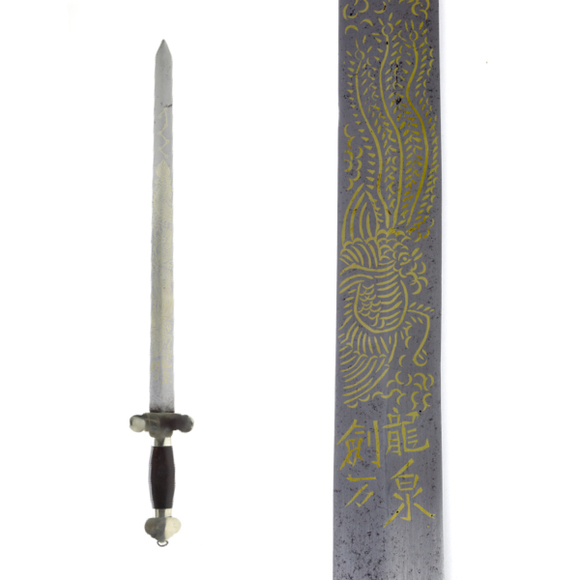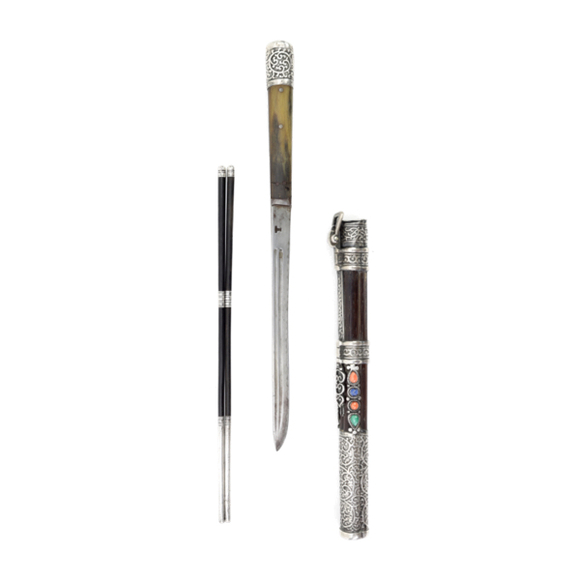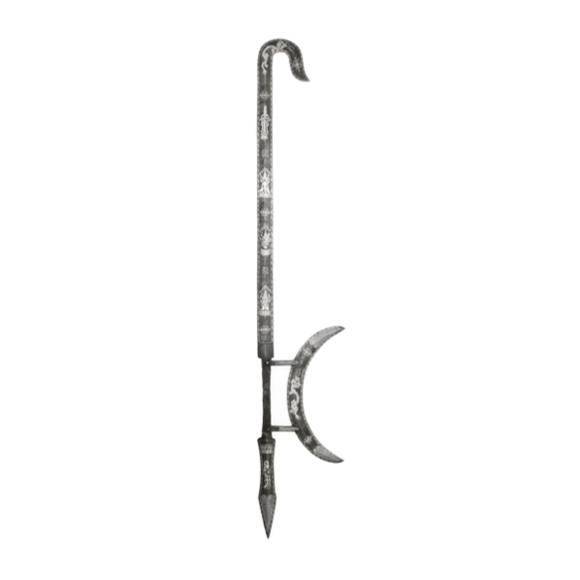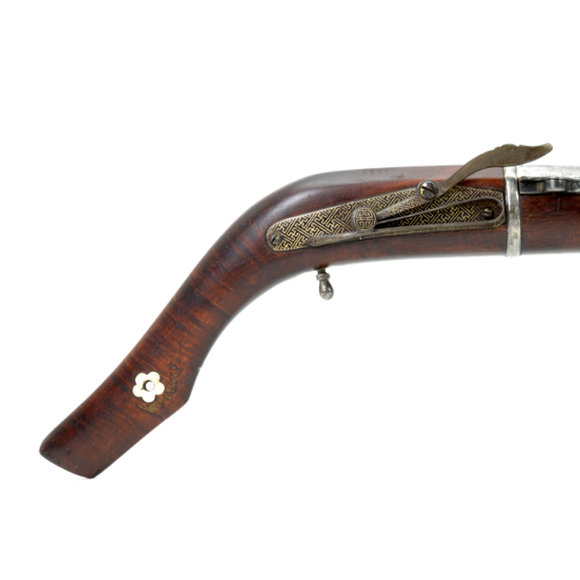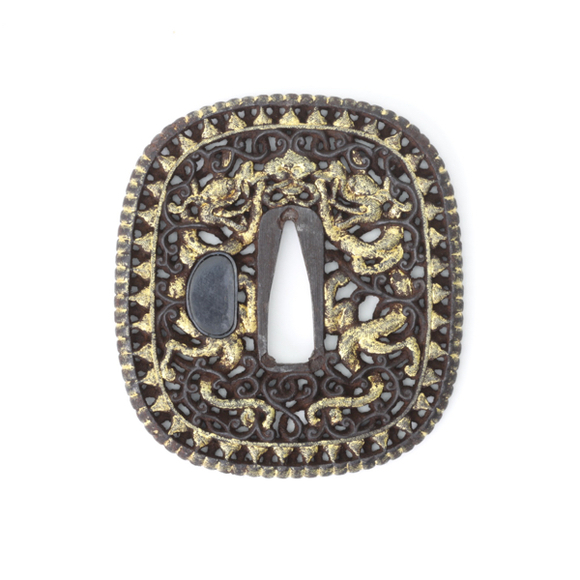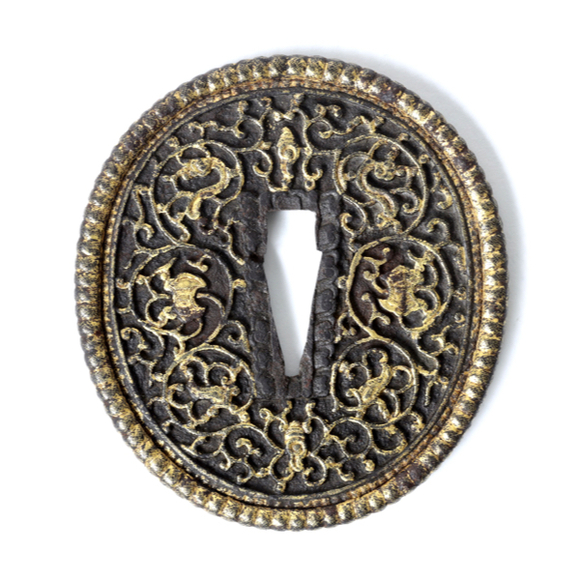A Chinese shortsword made by a well-known Longquan maker.

Sheathed 37 cm
Knife 28.8 cm
17.5 cm
Base 4 mm
Base 14 mm
Sheath 164 grams
Knife 89 grams
At hilt / knife junction
Nephrite jade, steel, silver, buffalo horn (bubalus bubalis)
China
19th century
European antique market
Description
A Chinese knife with a prized, spinach-green jade handle carved in the shape of a piece of bamboo. Jade was a very expensive material at the time, with jade thumb rings going for as much as 200 taels of silver.1
The blade is that of a typical Chinese/Manchu eating knife, with a single groove. It seems well-used, and often sharpened, indicating the piece wasn't just for show. At the base is a silver bolster. Unusual is the fact that it doesn't come with extra openings to carry chopsticks, as these tend to do.
The scabbard has a thick silver locket, carved with floral designs over a stippled background, and with a tiny dragon at the back holding its suspension rings.

The work is full of nice details, like the grooved rings.
Scabbard
The scabbard is expertly carved from a single piece of buffalo horn, there is no seem on the sides. This would have taken some very skillful drilling.
Both sides are carved with quaint scenes of gardens and streams with bridges, with several small boats, what appears to be a two water buffalo at the top of the back of the scabbard, and two men on another buffalo at the front. Two figures are standing on a bridge, one greeting the other. There is also an elephant with a vase with plants on its back.
The scenes remind much of the canals and gardens of the old town of Suzhou and may well refer to them.

The work is incredibly detailed. Such carving was best done in humid surroundings, making the material less brittle. For this reason the finest imperial ivory carvers also settled in the South and sent finished products to the court up north. It is, therefore, most likely made somewhere in Southern China.
Symbolism
The bamboo symbolizes modesty, mental strength, and resilience. It was revered for staying strong and lush green even in winter. On the scabbard is the pine tree, a symbol of steadfastness and longevity.
Condition
Hilt in good shape, some very minor old chips at end. Blade in used condition, has been sharpened many times. Scabbard mounts in good shape. Scabbard itself has been nibbled on, perhaps by a rodent, with small bites seen at the edges. The designs, however are mostly intact. See photos.
Notes
1. Princess Der Ling; Imperial Incense. Dodd, Mead & Company, New York. 1933. 200 taels comes to about 7.6 kilos of silver at a time when silver was a lot more expensive than it is today.















Typical Chinese hook sword, with seldom-seen fine silver wire overlay.
With the swirling arabesque motifs that are typical for this period.

